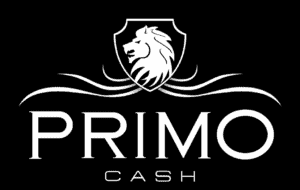It takes a steady and reliable cash income from a business owner to pay their business expenses and growth. That income is thought to come from products sold and services provided. Unfortunately, customers often take more time to pay. Customers, unfortunately, tend to take more time than they should to pay. Entrepreneurs can’t afford to wait on these payments. Customer bills that are not paid for are reflected in business accounting statements as receivables.
Typically receivables will create a gap in a business owners account that need to be filled in with a loan. Companies with business clients that don’t pay for services in advance or upon delivery have these three popular financing options: (1) line of credit, (2) asset based loan, and (3) factoring/accounts receivables financing. Each funding option has its benefits and drawbacks but there is no right or wrong answer. The following is a quick overview of the three product types and their most notable pros and cons:
- Line of credit – A revolving loan facility that allows a borrower to draw down funding as needed up to a maximum amount. The maximum loan amount is typically determined based on a company’s historical business cash flow and its debt to income ratio. Interest is due only on the funds that are currently drawn down not on the maximum loan amount.
- Pros:
- The funds can be repaid at anytime on or before the maturity date without any penalties.
- If a company is very profitable, regardless of how small the receivables are, its maximum loan amount could be very high.
- There are no restrictions on when a business owner can draw down and how she can use the funds.
- The interest rate is typically prime + 2 to 3%, which is the most affordable pricing in the market for short term financing.
- Cons:
- If the business was not profitable in the previous year (i.e., didn’t owe/pay business taxes last year), it likely won’t be eligible for a line of credit.
- If the business owner’s credit score is not 640 or higher, it will be difficult to get approved for a line of credit.
- Banks are one of the only lenders that offer line of credit products. So if a business doesn’t currently qualify for conventional bank financing, it will likely not have access to this product.
- Depending on the size of the line of credit, it can take 30 to 45 days to get approved and funded.
- Pros:
- Asset based loan – A revolving loan facility that a borrower can use as needed up to a maximum amount. The maximum loan amount is tied to the company’s average 90-day receivables balance. Interest is due only on the funds that are drawn down not on the maximum loan amount.
- Pros:
- The funds can be repaid at anytime on or before the maturity date without any penalties.
- The interest rates vary from affordable to moderate, ranging from Prime + 3% to mid teens.
- A business owner’s personal credit score is not a factor in determining eligibility for this financing.
- Cons:
- Business owners can draw down funds only if they have outstanding receivables.
- The maximum loan balance at any time cannot exceed 65% to 80% of the company’s outstanding 90-day receivables balance.
- There is a minimum draw down amount. A company is charged fees based on that minimum draw down amount whether they actually draw down the funds or not.
- It typically takes 10 to 14 days to approve, close, and fund.
- Pros:
- Factoring (or Accounts Receivables Financing) – A cash advance on a company’s current outstanding invoices that are less than 90 days old. The maximum advance amount is typically 90% of the total receivable. The borrower pays interest and fees on the advance.
- Pros:
- The funds can be repaid at anytime on or before the maturity date without any penalties.
- Factoring companies can provide approval within 24 hours and fund within 1 to 5 business days.
- A business owner’s personal credit score is not a factor in determining eligibility for this funding.
- Cons:
- The lender has to underwrite each outstanding invoice.
- The pricing ranges from 1 to 3% of the total advanced amount per month.
- The business owner has to notify their business customers that they have assigned their receivable to a factoring firm.
- The business owner has to setup a lockbox account controlled by a factoring firm and direct business customers to send payments to that lockbox.
- Pros:
If a business is having trouble collecting payments from customers fast enough to pay their bills on time, they should consider applying for either a line of credit, an asset based loan, or accounts receivables financing. There are positives and negatives associated with each type of funding. However, the important thing to remember is that they are all short-term financing solutions. These funding products are designed to give business owners the time to get current with their obligations and make changes (as needed) to their business models to ensure they are able to cover future working capital needs with cash generated from operations.

